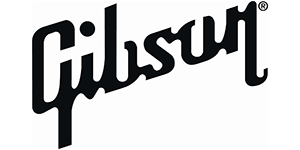
Today there’s no musician who wouldn’t want to purchase a Gibson instrument. Despite the price which bites and frightens any self-respecting guitar player wants to have at least one Gibson. Gibson marked the whole era of rock music and became a true legend. The instruments of the company have always been appreciated owing to their deep and round sound as well as startling design which makes these guitars stand out on the market.
SG Standard Bass
Branches and TMs:
Epiphone, Baldwin, Maestro, Wurlitzer, Tobias, Valley Arts Guitar, Slingerland, MaGIC, Gibson Amphitheatre, Hamilton, Chickering, Kramer, Steinberger, Electar, Aeolian.
Brief history:
One of the most popular brands on the music market. The story of this guitar making giant takes roots in 1902 when Gibson Mandolin-Guitar Mfg. Co, Ltd. Company was officially registered as a musical instruments manufacturer. Orville H. Gibson, the founder of the brand, began with mandolin making in Kalamazoo. His mandolins differed in the shape, had a gloomier sound and were quite easy to produce. In 1898 they were patented but in 1918 Orville died and the company afraid to lag behind invited Lloyd Loar to cooperate. As a result Gibson introduced many innovations in guitar and mandolin design although in 1924 Loar quit his position.
In the 1930s Gibson started to take interest in electric guitar manufacturing: that’s how electric banjos and mandolins appeared on the market as well as the first electric “Spanish” ES-150 model and electric Hawaiian lap steel guitar. During the World War II due to the lack of materials Gibson ceased the production of guitars switching it into the military one.
In 1944 Gibson acquired Chicago Musical Instrument Company which belonged to Maurice Henry Berlin who was the general manager of the company until 1969. In 1948 under his supervision Gibson went to Ted McCarty – to the person who changed the music world. During his years of work (1948-1966) the company expanded the list of products and put on the market such guitars as Les Paul, Explorer, Flying V, SG and many other fabulous models.
Between 1974 and 1984 Gibson guitar production was relocated from Kalamazoo to Nashville and in January, 1986, Henry Juszkiewicz, Dave Berryman, and Gary Zebrowski came to manage the company. They made this brand the way we know it.
Technical and technological achievements:
In 1955 Seth E. Lover designed one of the most legendary humbuckers - Patent Applied For. This model of the humbucker wasn’t the first one in the world but anyway it was the first popular and mass-produced model of such a pickup type. In 1994 Henry Juszkiewicz started the development of the wood supply ecological program. The company tried to collaborate with Rainforest Alliances Smart Wood company. Gibson supported Greenpeace and other environmental organizations. Gibson Les Paul Exotic Smartwood became the result of such a cooperation – it was released in 1998. The new guitar made of the best kinds of wood was priced at $1299 and the part of it went to Rainforest Alliances Smart Wood.
On the 7th of December, 2007, Robot Guitar was announced – the instrument hit the price of $2500. The essence of the “robotization” was in the settings track of the instrument. With the help of the regulator you could shift the pitch in a second. A year later Gibson presented the new development – Dark Fire guitar based on Chameleon Tone Technology and Robot Guitar second generation technology. The instrument was demonstrated to the public at Musikmesse held in April in 2009 in Frankfurt.
Gibson Dark Fire is based on Les Paul Custom 2008 model: standard red wood body with a maple top (guitar neck made of red wood as well). Dark Fire had some distinctions from the prototype: it has a multifunctional switch (instead of one of the timbre regulator), multifunctional pickup switch as well as the very design of the pickups. Besides, pins are reduced in size and generally improved. As for the filling Dark Fire and Les Paul Custom differ from each other as much as calculator differs from computer: robotized guitar is cram-full with smart electronics built on the digital elements.
Many famous musicians are in love with the instruments produced by Gibson – there wouldn’t be enough of space to list them all. And that proves the Gibson’s glory.

